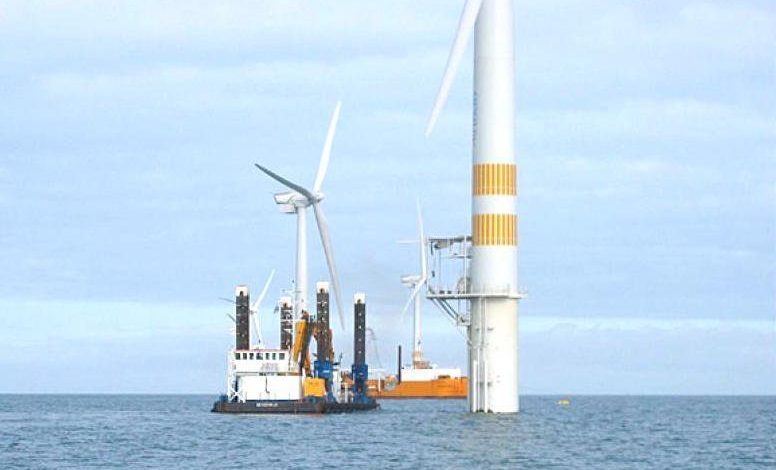Light at end of the tunnel, or merely glowing emergency signs?

Whilst presenting a series of workshops and planning sessions for the OSV market and shipyards over the last month, I thought that it would be appropriate to continue my look at this sector. Perhaps this could be seen as Part 3 of a series of pieces that reflects that the light at the end of the tunnel is an illusion and it is just a matter of time that we recognise that the light is the proverbial steam train about to smash the sector. This piece will be a more pleasing one to write as it will focus on emerging opportunities for redeployment of assets and suggests that there some flashlights on in the sector. This is not to say that all the doom and gloom is over, we are far from that and 2016 and 2017 will continue to be tough as the markets try and achieve balance in terms of demand / supply formulae for assets.
Having recently presented workshops in Singapore outlining the challenges faced by the shipping, shipyard and OSV markets in Southeast Asia, I came to the following conclusion: Those companies with strong management teams and the ability to make sound judgments based on market intelligence, will thrive in this market. Complicating matters is the notion that it is perhaps not so easy for those companies and individuals that have achieved relative success based on the market size and rapid growth, rather than due to any particular management strength. Consider how many companies entered the rig and OSV market despite early warnings given, and I remind readers that I was predicting a precipice as far back as February 2015 when being interviewed by Maritime CEO.
So what markets can offer some light at the end of the tunnel?
Whether scanning news from Splash, IHS Petrodata, Petro Global News and other reputable sites, it is becoming evident that there are at least two areas that offer some relief, not just for shipowners but for shipyards that support these vessels as well. Please note that this does not mean that these are the only opportunities, but research and observation will assist management teams identify these. The two that come to the fore at this stage are:
· Decommissioning
· Offshore wind farm support
So why the decommissioning space?
When taking the North Sea alone, the following picture emerges with regards what is needed to be decommissioned (courtesy of the Royal Academy of Engineering) :
· 8 installations with large concrete substructures
· 31 installations with large steel jackets in excess of (> 10,000 tonnes)
· 223 other steel jackets
· 280 subsea production systems
· 21 floating production systems
· 3,000 pipelines and around 5,000 wells.
In addition to removing this infrastructure there is also the need for well plug and abandonment. There are 160 wells in the Brent Field alone and each well will take approximately 30 days to complete at a cost of approximate cost of $4m each. This in itself creates 4,800 days of work at conservative contract value of $640m. Only 7% of the North Sea installations have been decommissioned to date, with 18 in progress at the moment, with a further 20 in the process of being finalised. The value that has been put on this activity alone is around a spend of $2bn a year, with a cumulative total of approximately $47bn.
The opportunities for the OSV market as well as the shipyards that support these vessels, include:
· Refurbishment of rigs and barges to accommodation and storage facilities
· Conversion of barge and fleet to heavylift support and operations
· Platform support vessels with ‘walk to work” fitout
· Subsea / ROVs for inspection, well plug
· Tugs, barges and anchor handlers, etc.
Why the offshore wind power generation market?
With political pressure on governments to provide clean energy solutions, many in Europe have moved to alternative forms , such as solar and wind. As these technologies have improved, an issue that has emerged is to how do these solutions overcome base load considerations and how to feed into the power grid that is not disruptive and allows a stable generation of power. I will not go into the science of these alternatives, suffice to say that offshore wind farms offer a viable solution in terms of aggregating the source. Hence we find a country such as Germany having up to 20% of their national supply of power coming from wind farms. These wind farms have to be built, operated and maintained , and this happens via the water.
The opportunities for OSV and related shipyard activity includes, but is not limited to:
· Conversion of jack up rigs, barges , semi subs to transport major equipment such as turbines and blades
· Conversion of liftboats to provide maintenance support and accommodation
· Crew transfer vessels
· ROV and cable installation vessels to deal with electrical pipe/ cable.
In conclusion, whilst there is doom and gloom in the OSV and shipyards sector, there are also greenshoot opportunities for those that look for them, gather the data and take action. Companies with astute management teams will take these opportunities before they too become overcrowded – if not, we will continue to see an escalation of insolvencies, mergers and stressed sales.
